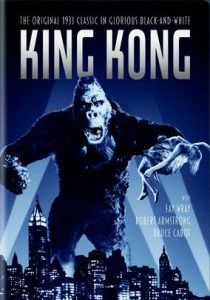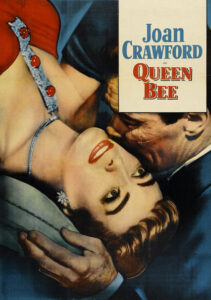King Kong-1933
Director Merian C. Cooper, Ernest B. Schoedsack
Starring Fay Wray, Robert Armstrong
Top 250 Films #240
Top 40 Horror Films #37
Scott’s Review #624
Reviewed March 11, 2017
Grade: A
The original, black-and-white 1933 version of King Kong (a few other remakes or reboots followed) is a masterful achievement in special effects never before done in film. It is also a great horror/adventure film that is timeless in its look and feel, capturing 1930s New York City, especially in majestic fashion.
Some of the dialogue and scenes are now dated or slightly racist, but the film still holds up well as an overall lesson in film exploration and is a treasure to watch again and again.
The film is a take on the classic tale Beauty and the Beast, sans the happy ending.
In the watery harbors of New York City, filmmaker Carl Denham (Robert Armstrong) prepares to embark, via ship, on a journey to film his latest picture.
Known for films about exotic wildlife, he has a film to end all movies in mind and, reluctantly, is talked into casting a female lead in the part. He scours the streets of New York City, finding broke and hungry Ann (Fay Wray)—a struggling actress unable to find work. She agrees to the role and heads off to a destination unknown.
Weeks later, he reveals to the crew that they are headed for Skull Island, a secret island known for pre-historic creatures and a beast only known as “Kong.”
Amid the voyage to the island, Ann and First Mate Jack Driscoll (Bruce Cabot) fall madly in love, giving the film a nice romantic slant along with the male-driven adventure story.
The adventure begins when the crew arrives at Skull Island to find a weird, ancient ritual marriage occurring among the tribal people. All hell breaks loose when the dangerous “King Kong” escapes from captivity and falls in love with Ann.
Mixed in with the story are enormous dinosaurs who destroy everything in their paths, including many of the men from the island and the film crew.
As I watched the film in 2017, not too far from 100 years after its incarnation, I often sat in wonderment, amazed at how the filmmakers achieved the luminous special effects throughout the second half of the film.
Given that the film is in black and white, the contrast between the dark, enormous ape (Kong) and the bright New York City and the majestic Empire State Building is prominently featured in the final, climactic act.
The scenes of a struggling Ann in King Kong’s hand seem flawless and believable. I marvel at how these scenes were shot and the enormous amount of effort it took to make them dramatic and not hokey-looking.
Since the film was made “pre-code”, several shocking scenes exist- when Kong rips off Ann’s clothes as she struggles in his palm and Kong’s stepping on and squashing men are featured sparing no graphic details.
In addition to the great adventure story of King Kong, there is also a tender love story and a bit of melancholy. King Kong is not so much a dangerous creature; instead, he has fallen in love with Ann and serves as her protector.
He is a scared animal, chained and confined, and subsequently shown to a stuffy Broadway crowd as entertainment—he becomes angry. I find Kong to be a sympathetic, misunderstood character. Because the human beings in the story are frightened, he becomes their enemy. He adores Ann and would not harm her in any way, but he is perceived as vicious, which he is not.
It can be argued who the real villain of the story is. Would it not have been filmmaker Carl, intent on exploiting King Kong and gaining profit from it? Is it the tribe people who keep Kong locked up, or is it for their protection?
My favorite scene is the climax of the film. After taking Ann from a hotel room, he scales the Empire State Building and is pursued by four military airplanes.
When he sets Ann down on the rooftop ledge, he battles the planes, only to sadly topple down to the ground- dead. As he swipes at the aircraft and succumbs to gunshot wounds, it is a sad and powerful scene.
King Kong (1933) is a legendary film. Audiences will empathize with the “villain” of the story, be impressed by the technical nuances, and enjoy the conventional and unconventional love stories presented.
One thing is sure: King Kong is one of the most influential films ever made.

